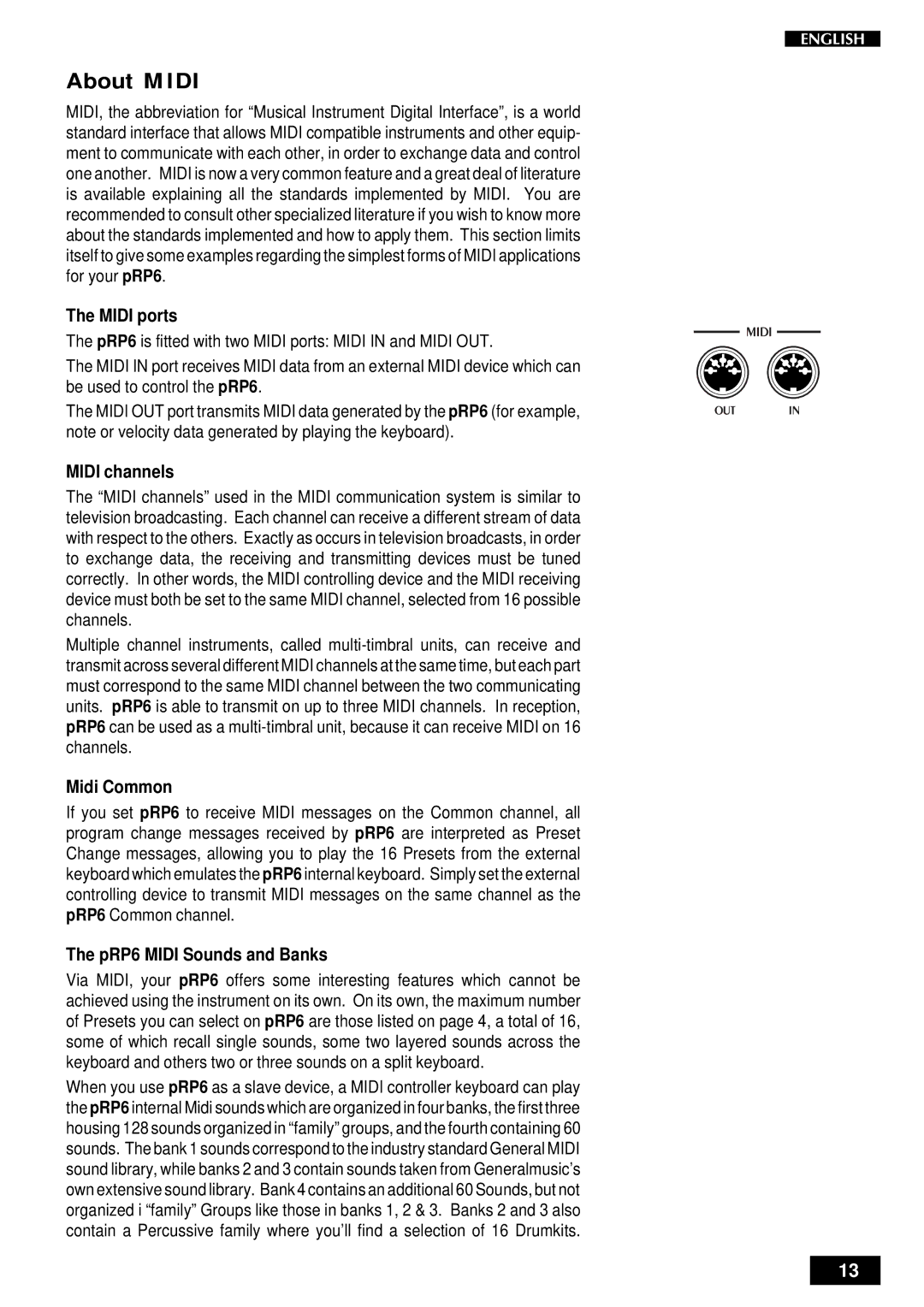
About MIDI
MIDI, the abbreviation for “Musical Instrument Digital Interface”, is a world standard interface that allows MIDI compatible instruments and other equip- ment to communicate with each other, in order to exchange data and control one another. MIDI is now a very common feature and a great deal of literature is available explaining all the standards implemented by MIDI. You are recommended to consult other specialized literature if you wish to know more about the standards implemented and how to apply them. This section limits itself to give some examples regarding the simplest forms of MIDI applications for your pRP6.
The MIDI ports
The pRP6 is fitted with two MIDI ports: MIDI IN and MIDI OUT.
The MIDI IN port receives MIDI data from an external MIDI device which can be used to control the pRP6.
The MIDI OUT port transmits MIDI data generated by the pRP6 (for example, note or velocity data generated by playing the keyboard).
MIDI channels
The “MIDI channels” used in the MIDI communication system is similar to television broadcasting. Each channel can receive a different stream of data with respect to the others. Exactly as occurs in television broadcasts, in order to exchange data, the receiving and transmitting devices must be tuned correctly. In other words, the MIDI controlling device and the MIDI receiving device must both be set to the same MIDI channel, selected from 16 possible channels.
Multiple channel instruments, called
Midi Common
If you set pRP6 to receive MIDI messages on the Common channel, all program change messages received by pRP6 are interpreted as Preset Change messages, allowing you to play the 16 Presets from the external keyboard which emulates the pRP6 internal keyboard. Simply set the external controlling device to transmit MIDI messages on the same channel as the pRP6 Common channel.
The pRP6 MIDI Sounds and Banks
Via MIDI, your pRP6 offers some interesting features which cannot be achieved using the instrument on its own. On its own, the maximum number of Presets you can select on pRP6 are those listed on page 4, a total of 16, some of which recall single sounds, some two layered sounds across the keyboard and others two or three sounds on a split keyboard.
When you use pRP6 as a slave device, a MIDI controller keyboard can play the pRP6 internal Midi sounds which are organized in four banks, the first three housing 128 sounds organized in “family” groups, and the fourth containing 60 sounds. The bank 1 sounds correspond to the industry standard General MIDI sound library, while banks 2 and 3 contain sounds taken from Generalmusic’s own extensive sound library. Bank 4 contains an additional 60 Sounds, but not organized i “family” Groups like those in banks 1, 2 & 3. Banks 2 and 3 also contain a Percussive family where you’ll find a selection of 16 Drumkits.
13
